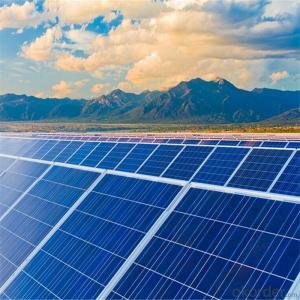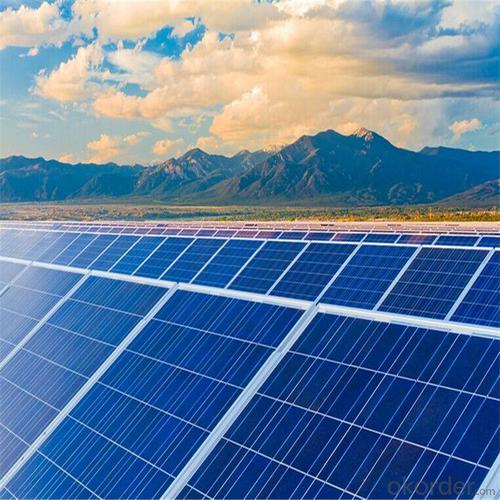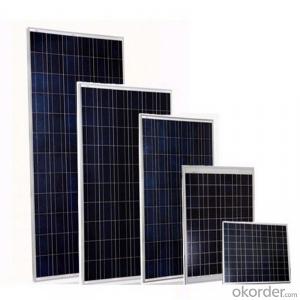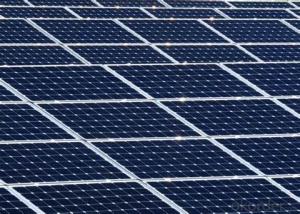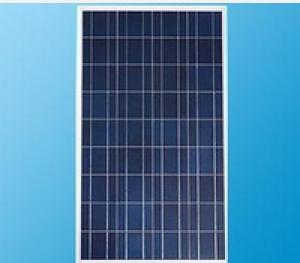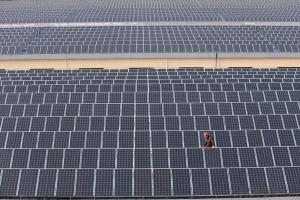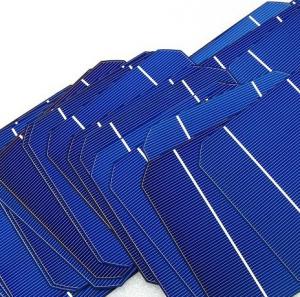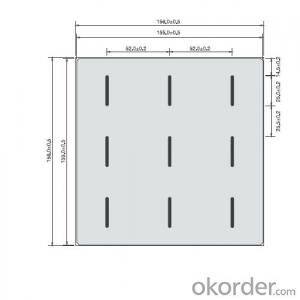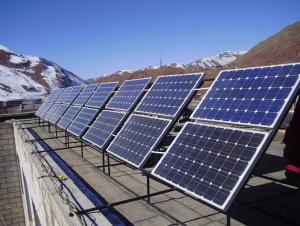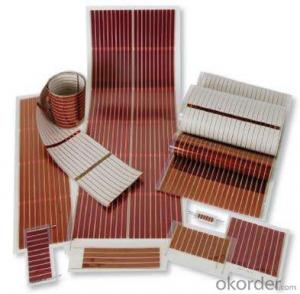245 Watt Photovoltaic Poly Solar Panels
- Loading Port:
- China main port
- Payment Terms:
- TT OR LC
- Min Order Qty:
- 1000 watt
- Supply Capability:
- 500000 watt/month
OKorder Service Pledge
OKorder Financial Service
You Might Also Like
Specification
Instruction
Quality and Safety
1. Rigorous quality control meets the highest international standards.
2. High-transmissivity low-iron tempered glass, strong aluminium frame.
3. Using UV-resistant silicon.
4. IS09001/14001/CE/TUV/UL
5.3w-300w mono & poly solar panel supply
Warranties
1. 10 years limited product warranty
2. 15 years at 90% of the minimal rated power output
3. 25 years at 80% of the minimal rated power output
Feature
1. High efficiency and High power.
2. Long-term electrical stability.
3. Lowest price and Fastest delivery.
4. Good quality and good service.
5.Bulk supply
6. Good Warranty
7.Big Sale
8.High quality
9.More than 35 years on the lifetime.
10 DHL/Fedex/UPS/TNT/EMS etc
Images
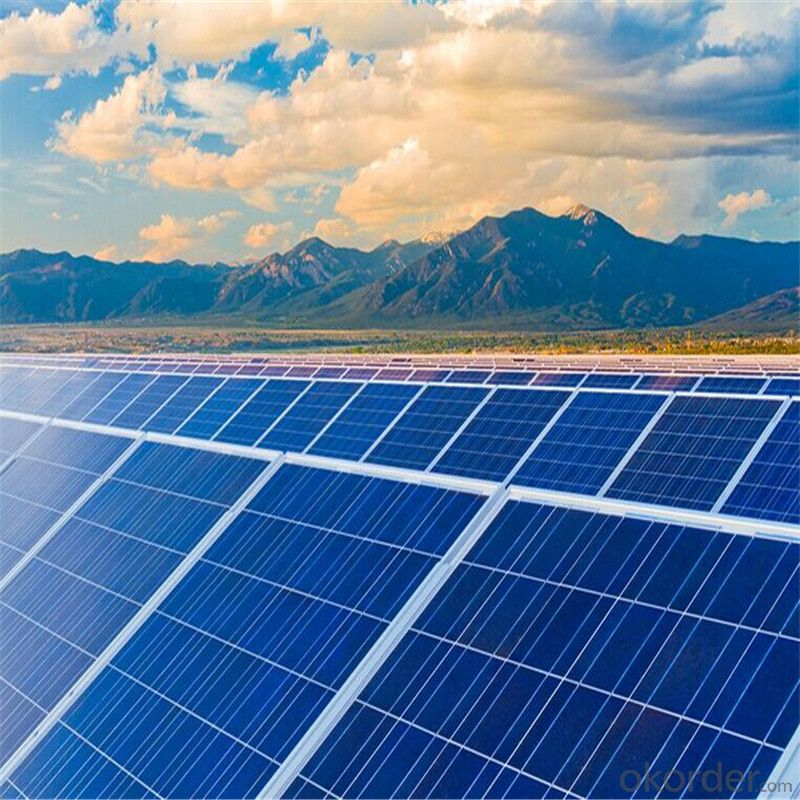
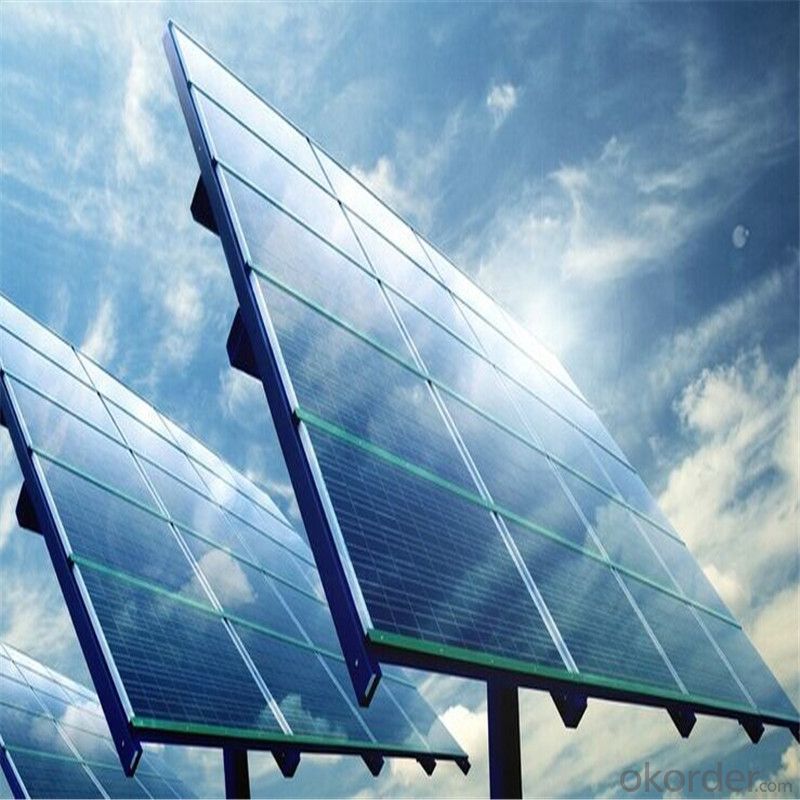
Specification
Model | SIM-100 |
Maximum Power at ST(Pmax)W | 100Wp |
Maximum Power Voltage(Vmp)V | 18.0V |
Maximum Power Current(Imp)A | 5.56A |
Open Circuit Voltage(Voc)V | 22.0V |
Short Circuit Current(Isc)A | 5.9A |
Cell Efficiency(%) | 17.0% |
Module Efficiency(%) | 15.37% |
Operating Temperature°C | -40°C to 85°C |
Maximum system voltage | 1000V(IEC)DC |
Power tolerance | -0.03 |
Temperature coefficients of Pmax | -0.45%/°C |
Temperature coefficients of Voc | -0.27%/°C |
Temperature coefficients of Isc | 0.05%/°C |
Weight(kg) | 7.4 |
Number of cell(pcs) | 4*9 |
FAQ
We have organized several common questions for our clients,may help you sincerely:
1). What’s price per watt?
A: It’s depends on the quantity, delivery date and payment terms of the order. We can talk further about the detail price issue. Our products is high quality with lower price level.
2). Can you tell me the parameter of your solar panels?
We have different series of cells with different power output, both from c-si to a-si. Please take our specification sheet for your reference.
3). How do you pack your products?
We have rich experience on how to pack the panels to make sure the safety on shipment when it arrives at the destination.
4). How long can we receive the product after purchase?
In the purchase of product within three working days, We will arrange the factory delivery as soon as possible. The perfect time of receiving is related to the state and position of customers. Commonly 7 to 10 working days can be served.
- Q: Can solar cells be used to power wireless communication networks?
- Yes, solar cells can be used to power wireless communication networks. Solar cells convert sunlight into electricity, which can be used to power various devices, including wireless communication equipment. By harnessing solar energy, wireless networks can operate independently of traditional power sources, making them sustainable and environmentally friendly.
- Q: What is a monocrystalline solar cell?
- A monocrystalline solar cell is a type of solar panel that is made from a single crystal structure, typically silicon. It is known for its high efficiency and sleek, black appearance. The single crystal structure allows for better electron flow, resulting in greater energy conversion from sunlight into electricity.
- Q: How do solar cells perform in areas with frequent tornadoes?
- Solar cells can perform well in areas with frequent tornadoes as long as they are properly designed and installed to withstand extreme weather conditions. While tornadoes can potentially damage or destroy solar panels, advancements in technology have made solar cells more resilient. Additionally, solar panels can be reinforced or mounted securely to minimize the risk of damage. It is important to consider the specific location and design of the solar installation to ensure it can withstand tornadoes and other severe weather events.
- Q: How do solar cells perform in cloudy or overcast conditions?
- Solar cells are less efficient in cloudy or overcast conditions compared to direct sunlight. Cloud cover reduces the amount of sunlight reaching the solar cells, resulting in decreased electricity production. However, solar cells can still generate some energy in these conditions, although at a reduced rate.
- Q: What is the role of solar cells in powering emergency response systems?
- Solar cells play a crucial role in powering emergency response systems by providing a reliable and sustainable source of energy. During emergencies, when the traditional power grid may be disrupted or unavailable, solar cells can generate electricity from sunlight, ensuring continuous operation of critical systems such as communication devices, lighting, and medical equipment. This renewable energy source helps emergency responders effectively carry out their duties, enabling them to provide aid, maintain connectivity, and save lives in challenging situations.
- Q: What is the typical lifespan of a solar cell?
- The typical lifespan of a solar cell is around 25 to 30 years, although some high-quality panels can last even longer with proper maintenance and care.
- Q: Can solar cells be used in telecommunications systems?
- Yes, solar cells can be used in telecommunications systems. Solar cells can convert sunlight into electrical energy, which can then be used to power various components of telecommunications systems such as base stations, repeaters, and remote communication stations. This allows for more sustainable and independent operation of these systems, especially in remote areas where access to traditional power sources may be limited.
- Q: How do solar cells perform in cloudy weather?
- Solar cells do not perform as efficiently in cloudy weather compared to sunny conditions, as they rely on direct sunlight to generate electricity. However, they can still generate some electricity, albeit at a reduced rate, as they can absorb diffuse sunlight and convert it into energy.
- Q: What is the future of solar cells?
- The future of solar cells looks promising, as advancements in technology continue to improve their efficiency, affordability, and versatility. With ongoing research and development, we can expect to see solar cells become even more efficient in converting sunlight into electricity, allowing for greater energy production. Additionally, innovations in materials and manufacturing techniques may lead to more cost-effective production methods, making solar cells more accessible to a wider range of consumers. Furthermore, integration of solar cells into various surfaces and structures, such as windows, clothing, and vehicles, will likely expand their applications and increase their adoption. Overall, the future of solar cells appears to be characterized by higher efficiency, lower costs, and increased integration, leading to a greater contribution to our global energy needs.
- Q: Can solar cells be used for powering outdoor signage?
- Yes, solar cells can be used for powering outdoor signage. Solar panels can convert sunlight into electricity, which can then be used to power various devices including outdoor signage. This is a sustainable and environmentally friendly option, as it reduces dependence on traditional electricity sources and helps to minimize carbon emissions.
Send your message to us
245 Watt Photovoltaic Poly Solar Panels
- Loading Port:
- China main port
- Payment Terms:
- TT OR LC
- Min Order Qty:
- 1000 watt
- Supply Capability:
- 500000 watt/month
OKorder Service Pledge
OKorder Financial Service
Similar products
Hot products
Hot Searches
Related keywords
